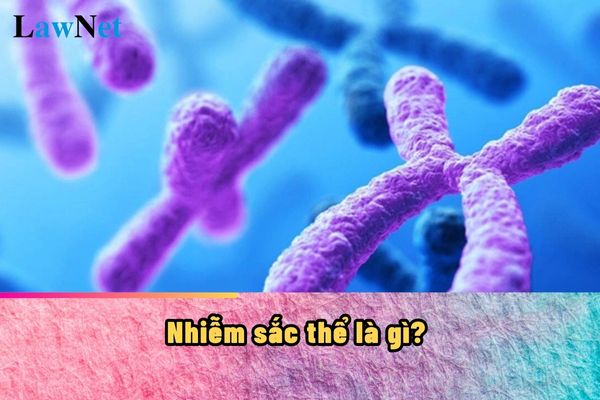What is a chromosome? Are lessons on chromosomes included in grade 9 curriculum in Vietnam?
What is a chromosome?
|
Definition of Chromosome A chromosome is a thread-like structure located inside the nucleus of a cell, containing most of the genetic information (DNA) of the organism. They play a crucial role in cell division and in transmitting genetic traits from one generation to the next. |
Note: The information is for reference purposes only./.

What is a chromosome? Are lessons on chromosomes included in grade 9 curriculum in Vietnam? (Image from Internet)
Are lessons on chromosomes included in grade 9 curriculum in Vietnam?
Pursuant to Section V of the General Education Curriculum for the subject of Natural Science issued along with Circular 32/2018/TT-BGDDT, the content for grade 9 curriculum is regulated as follows:
Chromosomes
- Definition of chromosomes
- Structure of chromosomes
- Characteristics of chromosome sets
- Chromosome set: diploid, haploid
- Chromosome mutations
Chromosome Heredity:
- Mitosis
- Meiosis
- Mechanism of sex determination
- Linked inheritance
Thus, according to the regulations, chromosomes are one of the topics that students will learn in the grade 9 Natural Science subject curriculum.
What are regulations on evaluation of results in grade 9 Natural Science curriculum in Vietnam?
Pursuant to Section VII of the General Education Curriculum for the subject of Natural Science issued along with Circular 32/2018/TT-BGDDT, the evaluation of results in grade 9 Natural Science curriculum in Vietnam is as follows:
EDUCATION OUTCOME EVALUATION
- General Orientation
The objective of evaluating education outcomes is to provide accurate, prompt, and valuable information on the level of achievement (required standards) of the curriculum and the progress of students to guide learning activities, adjust teaching activities, manage and develop the curriculum, ensure the progress of each student, and improve education quality.
The basis for evaluation is the required standards for qualities and competencies as specified in the Overall Curriculum and the subject-specific curriculum. The scope of evaluation encompasses all the content and required standards of the Natural Science curriculum. Evaluation is based on evidence from students' training, learning processes, and products during their learning journey.
Education outcomes are evaluated using qualitative and quantitative methods through process evaluation, summary evaluation at educational institutions, widescale evaluations at national or local levels, and international assessments.
Process evaluations are organized by the subject teacher, based on evaluation results from teachers, students' parents, the evaluated student, and other students in the group or class.
Summary evaluations are organized by the educational institution. Widescale evaluations at national or local levels are conducted by national or provincial/municipal quality assurance organizations to manage teaching activities, develop curricula, and improve education quality.
The evaluation method must ensure reliability, objectivity, and suitability for each age group and educational level, without creating pressure on students. It should minimize costs for the state budget, students' families, and society. Evaluation and assessment must achieve the following main functions and requirements:
- Evaluate the level of achievement of required standards and teaching methods.
- Provide comprehensive, accurate, and timely feedback on learning outcomes for students to self-correct their learning processes; for teachers to adjust teaching activities; for school management to improve education quality; and for families to monitor and assist students.
- Self-evaluation and peer evaluation by students are emphasized and seen as a means to develop competencies such as self-study, critical thinking; and to build qualities like diligence, perseverance, self-control, and confidence.
- Combine process evaluation with summary evaluation; qualitative evaluation with quantitative evaluation, where quantitative evaluation is based on qualitative evaluation feedback that is timely and accurate.
- Evaluation combines multiple forms to ensure a comprehensive assessment of content, common competencies, specific competencies, and qualities.
- Evaluate the integration of content and skills to solve cognitive and practical problems. This is an effective method characteristic of evaluating students' competencies.
- Focus on evaluating practical science skills.
- Some Forms of Testing and Evaluation
Natural Science uses the following evaluation forms:
- Evaluation through written tasks: essays, objective tests, research papers, reports, ...
- Evaluation through oral tasks: oral questions, interviews, presentations,...
- Evaluation through observation: observing students' attitudes, activities during experiments, group discussions, field trips, visits to scientific institutions, production facilities, and carrying out projects to apply knowledge in practice, using tools like observation grids, checklists, learning portfolios,...

